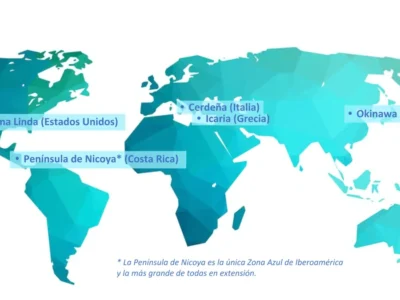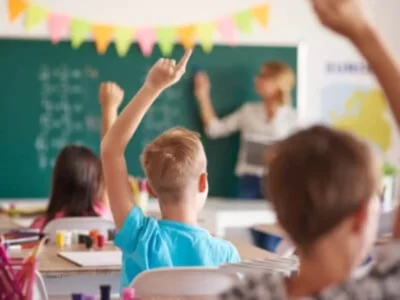This article aims to provide an in-depth understanding of cerebral palsy, including its causes, types, symptoms, diagnosis, treatment, prognosis, strategies to address it and the latest research advances.
What is cerebral palsy?
Cerebral palsy is a complex neurodevelopmental disorder that affects people’s motor, communication and cognitive abilities. It is caused by brain injuries that occur during birth or shortly thereafter. It is a lifelong condition and requires treatment and a multidisciplinary approach.
Prevalence and impact
Cerebral palsy is one of the most common childhood physical disabilities, with a prevalence of approximately 2 to 3 per 1,000 births. The impact of cerebral palsy on individuals and their families can be significant, as it can affect mobility, activities of daily living, communication and overall quality of life.
Causes and risk factors
Understanding the causes and risk factors associated with cerebral palsy can provide insight into preventive measures and possible interventions.
Prenatal factors
Prenatal factors, such as maternal infections, exposure to toxins and certain genetic conditions, can contribute to the development of cerebral palsy. Adequate prenatal care and a healthy lifestyle play a crucial role in minimizing these risks.
Perinatal factors
Difficulties during labor, preterm birth and low birth weight are some of the perinatal factors that can increase the risk of cerebral palsy. Rapid medical interventions and specialized care can help mitigate these factors.
Postnatal factors
Certain postnatal factors, such as infections, traumatic brain injuries and medical conditions like meningitis or encephalitis, can cause brain injuries and subsequently cerebral palsy. Timely medical interventions and appropriate follow-up are essential to minimize these risks.
Types of cerebral palsy
Cerebral palsy can present in different forms, depending on the location and extent of the brain damage. Below are descriptions of the main types of cerebral palsy:
1. Spastic cerebral palsy
Spastic cerebral palsy is the most common type and is characterized by increased muscle tone, stiffness and difficulty performing coordinated movements.
2. Dyskinetic cerebral palsy
Dyskinetic cerebral palsy is characterized by involuntary and uncontrolled movements that make it difficult to maintain posture and voluntary movements.
3. Ataxic cerebral palsy
Ataxic cerebral palsy primarily affects balance and coordination, causing unsteady movements and difficulty performing precise motor tasks.
4. Mixed cerebral palsy
Mixed cerebral palsy occurs when a person presents symptoms of several types of cerebral palsy.
Symptoms
Cerebral palsy manifests through a range of signs and symptoms, which can vary from person to person, both in how they present and in their severity.
Motor function alterations
Motor function alterations are characteristic symptoms of cerebral palsy and can include muscle stiffness, poor coordination, muscle weakness and contractures.
Speech and communication difficulties
Many people with cerebral palsy may have difficulties with speech and communication. Difficulties can range from articulation problems to more severe speech disorders that require alternative communication methods.
Intellectual and developmental disability
Cerebral palsy can impact intellectual functioning and development. While some people may experience learning difficulties or cognitive problems, others may have completely normal cognitive development.
Sensory problems
Some people with cerebral palsy may experience sensory impairments, such as vision or hearing difficulties, which can further affect their daily functioning and their interactions with the environment.
Associated conditions
Cerebral palsy is often associated with other health problems, such as epilepsy, musculoskeletal problems, nutritional difficulties and behavioral disorders.
Diagnosis and evaluation
An accurate diagnosis and evaluation play a crucial role in developing a treatment tailored to the specific needs of the person with cerebral palsy.
Clinical evaluation
Clinical evaluations involve a comprehensive assessment of motor function, cognitive abilities, communication skills and associated health conditions . This assessment helps determine the type and severity of cerebral palsy.
Medical imaging
Medical imaging techniques, such as magnetic resonance imaging (MRI), can provide detailed information about brain structure and help identify possible brain abnormalities associated with cerebral palsy.
Genetic testing
In some cases, genetic testing may be performed to identify specific genetic conditions that increase the risk of cerebral palsy. Genetic counseling may be beneficial to understand the underlying genetic factors and possible implications for future pregnancies.
Treatment
The treatment of cerebral palsy involves a multidisciplinary approach that addresses the specific needs and challenges faced by people with this condition.
The treatment of cerebral palsy usually requires a team of healthcare professionals that includes neurologists, physiotherapists, occupational therapists, speech therapists, psychologists and social workers. Collaboration among these specialists ensures comprehensive care and treatment.
Physiotherapy and occupational therapy
Physiotherapy and occupational therapy are essential components of cerebral palsy treatment. These therapies focus on improving mobility, maximizing independence and developing motor skills through specific exercises, assistive devices and adaptation strategies.
Speech therapy
Speech therapists can help improve communication and language skills and teach the use of communication devices. Speech therapy also addresses problems with feeding and swallowing.
Assistive devices and technology
Assistive devices, such as wheelchairs, orthopedic devices and orthoses, can improve mobility and help people with cerebral palsy in their daily activities.
Technological advances, such as Augmentative and Alternative Communication (AAC) devices, also facilitate communication for people with speech difficulties. These devices range from simple picture boards to sophisticated electronic systems that allow users to select words or phrases by touch, gaze or other input methods.
Cognitive stimulation and rehabilitation programs can be very useful for maintaining or improving cognitive abilities. They include various learning and training methods so that the person reinforces and recovers, as far as possible, lost skills and acquires other new ones essential to achieve the highest possible level of functionality and independence, both physically and psychologically and in social adaptation.
Medications and surgical interventions
Medications, such as muscle relaxants and antispasticity drugs, may be prescribed to treat specific symptoms of cerebral palsy. In some cases, surgical interventions, such as selective dorsal rhizotomy or orthopedic procedures, may be considered to relieve muscle tension or correct skeletal deformities.
Prognosis and Perspectives
The prognosis for people with cerebral palsy varies depending on severity, type and associated conditions. Early intervention, ongoing therapy and supportive care significantly improve long-term outcomes and the quality of life of people with cerebral palsy.
Each person is unique
It is important to recognize that the experience of each person with cerebral palsy is unique. The level of functional abilities, cognitive development and associated challenges can differ significantly from one person to another.
Lifelong assistance and care
Cerebral palsy is a chronic condition that requires lifelong support and care. Modifications, adaptations and ongoing therapies can help people with cerebral palsy optimize their potential and lead a full life.
Coping strategies and support
Living with cerebral palsy can pose various emotional and practical challenges for individuals and their families. It is essential to have coping strategies and adequate support systems.
Emotional and psychological support
Emotional and psychological support, which includes counseling and therapy, can help patients with cerebral palsy and their families cope with the emotional aspects of the condition, such as grief, stress and anxiety.
Educational resources
Using educational resources adapted to the specific needs of people with cerebral palsy can facilitate learning and academic development. Individualized Education Programs (IEP) and specialized educational programs play a fundamental role in supporting educational goals.
Support groups and associations
Participating in support groups and associations that advocate for people with cerebral palsy can provide those affected and their families with a sense of community, shared experiences and access to valuable resources.
Research and advances
Ongoing research and advances in the field of cerebral palsy offer hope for improving outcomes and treatment options.
Recent studies and findings
Recent studies have shed light on the underlying brain mechanisms, possible genetic factors and innovative therapeutic approaches for cerebral palsy. Promising findings encourage continued exploration and the development of specific treatments.
Emerging treatments and therapies
Emerging treatments, such as stem cell therapy, robotics, exoskeletons and virtual reality–based interventions, are promising for improving rehabilitation outcomes and treating specific symptoms associated with cerebral palsy. Ongoing research aims to refine these approaches and explore their long-term benefits.
Conclusion
Cerebral palsy is a complex neurological condition that affects people in various ways, challenging their motor functions, their ability to communicate and their overall quality of life. Through early diagnosis, multidisciplinary treatment and continuous support, people with cerebral palsy can develop their full potential and lead full lives.
FAQs
Is cerebral palsy a progressive disease?
No, cerebral palsy does not worsen over time. However, the associated symptoms and difficulties may change as the person grows and develops.
Can cerebral palsy be prevented?
In some cases, cerebral palsy can be prevented by addressing certain risk factors, such as infections during pregnancy, avoiding harmful substances and ensuring good prenatal care. However, not all cases of cerebral palsy can be prevented.
Can people with cerebral palsy live independently?
Many people with cerebral palsy live independent lives with appropriate support, adaptations and access to assistive devices and therapies that improve their mobility and functional abilities.
What is the life expectancy of a person with cerebral palsy?
The life expectancy of people with cerebral palsy is often similar to that of the general population. However, the severity of the condition and associated complications can influence each person’s life expectancy.
Can adults develop cerebral palsy?
Although cerebral palsy is usually diagnosed in early childhood, brain injuries or trauma in adulthood can lead to acquired cerebral palsy.
If you liked this post about cerebral palsy, you may also be interested in the following articles:
“This article has been translated. Link to the original article in Spanish:”
Parálisis cerebral: comprender y tratar una enfermedad compleja del neurodesarrollo







 Worksheet for working on selective attention with children: Exact Objects
Worksheet for working on selective attention with children: Exact Objects
Leave a Reply